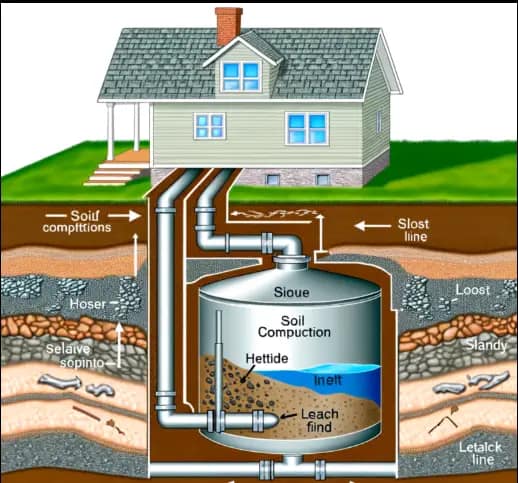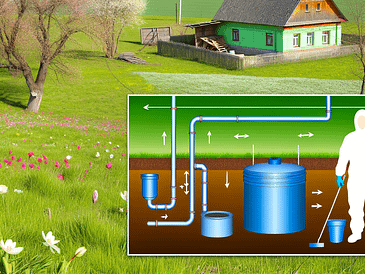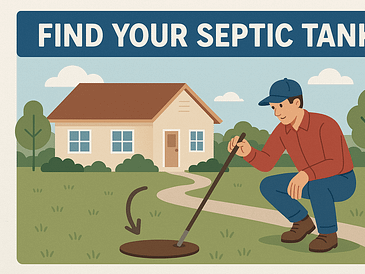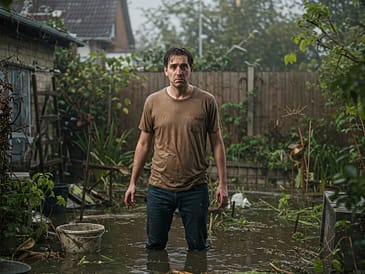How Deep Should a Septic Tank Be Installed? A Homeowner’s Guide
You wouldn’t bury treasure where you can’t find it—but when it comes to septic tanks, digging the right depth is far more than just a guessing game. Install it too shallow, and you risk exposure, odors, or freezing. Go too deep, and you’re facing expensive pumping problems. If you’re planning a home with a septic system or upgrading your current one, knowing the proper depth is crucial to a functional, long-lasting setup.
This guide is tailored for homeowners, do-it-yourself renovators, and even property developers aiming to understand the ins and outs of proper septic tank depth. Read on to uncover everything you need to know before breaking ground on your septic system.
What Is a Septic Tank and How Does It Work?
A septic tank is a key component of a private sewage treatment system. It’s designed to collect and break down household wastewater through natural processes involving bacteria. After solids settle at the bottom, the liquid portion moves on to a drain field for further filtration.
Typical residential systems include the septic tank itself, inlet and outlet pipes, and the leach field. This setup functions as an efficient, underground mini-treatment plant for rural and suburban homes not connected to municipal sewer lines.
Standard Septic Tank Installation Depth
The average installation depth for a septic tank typically ranges from 4 to 6 feet from ground surface to the tank lid, depending on local codes and site conditions. From the top of the tank to the base, tanks can run up to 5 feet tall, meaning that the base may sit as much as 11 feet underground in some configurations.
These depths aren’t set in stone. They vary based on a variety of factors, including soil type, land grade, and climate. However, building codes usually specify both a minimum and maximum depth to ensure safe and efficient operation.
Recommended Depth Guidelines
Generally, the minimum recommended depth is enough to cover the tank with at least 6 inches to 2 feet of soil. The maximum typically shouldn’t exceed what makes access for maintenance difficult—usually no more than 4 feet above the lid.
Key Factors That Affect Septic Tank Depth
Soil Composition and Ground Conditions
Heavy clay or rocky soils can influence how deep you can safely dig. Loose or sandy soils, on the other hand, may require reinforcing the pit to prevent collapse during installation.
Local Climate and Frost Line
In colder climates, tanks need to sit below the frost line to prevent freezing. In northern regions, this line can be over 4 feet deep. Failure to consider this risk could lead to frozen pipes and an inoperable system.
Slope and Elevation of the Land
A sloped yard could mean one end of the tank sits deeper than the other. It’s essential to level the tank at installation to ensure proper drainage and sedimentation.
Type and Size of the Septic System
Larger tanks may require deeper or wider pits. Systems with advanced treatment components might have shallower installation requirements for easier access.
Accessibility for Maintenance and Pumping
Install your tank at a depth that allows pump trucks easy reach. If the lid is buried too deep, future maintenance becomes a difficult and costly process.
Local Building Codes and Regulations
Always consult your municipality’s building department. Local codes regulate not just depth but tank placement, setback distances, and cover requirements.
Local and State Regulations
Every jurisdiction has its own rules on septic tank installations, including how deep they must go. Urban areas might require more shallow installation due to proximity to utilities, while rural zones allow deep placement.
Permits are often required before beginning excavation, and inspections are mandatory both during and after installation. According to the U.S. Environmental Protection Agency (EPA), “Improper siting or design can lead to system failure and contamination of nearby water bodies.”
Environmental and Site Considerations
Proximity to Water Sources and Wells
Never install a septic tank near drinking water wells. Most states mandate at least a 50- to 100-foot setback to avoid contamination.
Impact on Groundwater and Drainage
A poorly placed tank can disrupt natural groundwater flow or pool over time. Ensure your installation doesn’t hinder existing drainage patterns.
Setback Distances for Health and Safety
Besides water sources, setbacks also apply to property lines, buildings, and bodies of water to reduce health hazards and contamination risks.
Excavation and Installation Best Practices
Preparing the Site and Marking the Depth
Use survey tools or laser levels to mark the excavation area. Double-check the measurements against local code requirements before digging.
Equipment Needed for Excavation
You’ll likely need a backhoe or excavator, and potentially a compactor for the base. Manual digging is generally not practical due to size and depth requirements.
Ensuring Level Placement and Support Base
The tank must sit on a stable, level bed of compacted gravel or sand to avoid future settling. Even slight dips can lead to cracking and leaks over time.
Inspecting Depth with Professional Equipment
Consider hiring a surveyor or using depth-measuring equipment to verify your plans before sealing the site. A mistake now can cost thousands later in repairs.
Common Mistakes to Avoid
Installing Too Shallow
Shallow tanks are vulnerable to extreme temperatures, physical damage from vehicles, and even root intrusion. They’re also more likely to release odors.
Installing Too Deep
A deep tank creates maintenance challenges and hinders proper drainage flow. Pumps may be needed to assist water movement, adding to energy costs and system complexity.
Ignoring Frost Heave or Drainage Slope
Failing to account for frost heave can damage pipes or lift the tank. Similarly, ignoring slope direction could cause pooling and inefficient wastewater flow.
When to Consult a Professional Installer
Signs You Need Expert Help
If your land has a steep grade, poor soil, or you’re unsure of utility lines, it’s time to call a pro. Any mistakes in planning can lead to serious sanitation issues.
Benefits of Professional Planning and Installation
Experts ensure your tank is placed at the right depth, meets all codes, and functions efficiently. They also take care of inspections, permits, and coordination with local authorities.
Costs Associated With Hiring Experts vs DIY Risks
While professional installation may cost more upfront—ranging from $3,000 to $7,000—it can save thousands in avoided fines, system failures, or environmental cleanup later on.
Conclusion
Knowing how deep to install your septic tank is not just a technical formality—it’s a vital step that affects performance, safety, and long-term costs. From frost lines to soil types and legal guidelines, numerous variables must be considered.
Don’t rush the process. Consult local regulations, use the appropriate tools, and when in doubt, hire a certified installer. A correctly installed septic system is an investment in your property’s value and environmental health.
FAQs
Can I install a septic tank myself?
While it’s possible for experienced individuals to install a system, most areas require licensed professionals to ensure compliance with codes. DIY mistakes can lead to costly consequences.
How do I know how deep my existing tank is?
You can consult your property’s septic plans or hire a septic specialist with probing tools to locate and measure the tank’s depth accurately.
Does septic tank depth affect system performance?
Yes. Improper depth can lead to freezing, poor flow, or excessive strain on the system. Proper installation ensures efficient wastewater treatment and easy maintenance.
What happens if my tank is installed too deep?
If buried too deeply, issues like pumping inefficiency, costly maintenance, and even pipe failure can occur. In some terrains, it may also require additional equipment to move the wastewater correctly through the system.
“`





